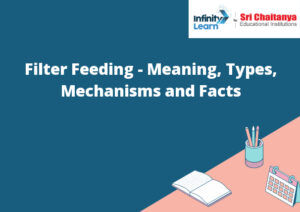Table of Contents
What is Filter Feeding?
Filter feeding is a mode of feeding that is used by a variety of animals including some fish, bivalves, cephalopods, and krill. Filter feeders use their specialized body structure to selectively remove particles from the water around them. This can include plankton, detritus, and other organic and inorganic material.

Types of Filter Feeders
Filter feeders are animals that sift food particles from the water or air around them. They have a system of filters to capture food while leaving other particles behind. There are many different types of filter feeders, including whales, baleen whales, sharks, rays, manta rays, and sponges.
What is Filter Feeding?
Filter feeding is a method of feeding in which an animal or organism draws in water from its surroundings through a filtering structure and then extracts small food particles from the water. This type of feeding is common in aquatic animals such as fish, mollusks, and crustaceans, as well as in some terrestrial animals such as earthworms.
Filter Feeding Animals
Filter feeding animals consume food by straining it from the water or other surrounding medium. This type of feeding occurs in a variety of aquatic and marine animals, including baleen whales, mussels, sponges, and rays. The food is captured either by the animal’s body or by specialized feeding apparatus.
Filter Feeding in Mollusca
Gills are the primary organs of respiration and osmoregulation in mollusks. In bivalves (like clams and oysters), the gills are located on the inside of the shell. In cephalopods (like octopuses and squid), the gills are located on the outside of the body.
Filter Feeding in Polychaetes
Feeding in polychaetes can be done in two ways: through the mouth and through the tentacles.
Feeding through the mouth is the most common way of feeding in polychaetes. This is done by using the jaws to bite off pieces of food from the substrate or from other organisms.
Feeding through the tentacles is done by extending the tentacles out from the body to catch food. This is mostly done by small polychaetes that live in the water column.
Filter Feeding in Echinoderms
Most echinoderms are suspension feeders, meaning they use their feeding apparatus to collect food particles from the water. There are several different types of feeding apparatuses, but they all work on the same principle: the animal traps food particles in mucous or sticky threads and then draws them into its mouth.
Filter Feeding Mechanisms in the Sponges
There are three main types of sponge feeding mechanisms: filter feeding, suspension feeding, and predation.
Filter Feeding
Filter feeding sponges use their spiny cells to create a current of water that draws in food particles. These spiny cells are located on the sponge’s surface and are covered in tiny bristles that help to capture food. The food particles are then swept into the sponge’s body, where they are digested.
Suspension Feeding
Suspension feeding sponges use their flagella to draw in food particles from the water column. These food particles are then digested by the sponge.
Predation
Predatory sponges use their spiny cells to capture prey. The prey is then digested by the sponge.









